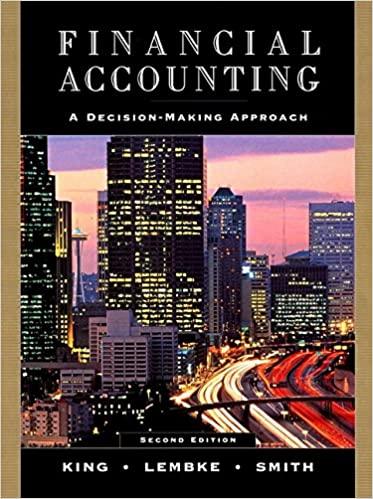Multiple Choice: Reporting for Notes Receivable Select the best answer for each of the following: 1, Interest-bearing
Question:
Multiple Choice: Reporting for Notes Receivable Select the best answer for each of the following:
1, Interest-bearing notes receivable are likely to be received from:
a. Customers who appear to be unable to pay for products purchased.
b. Customers who have a temporary cash-flow problem.
c. Customers with excess cash.
d. Customers who make frequent purchases.
2. When a noninterest-bearing note receivable is accepted at the time of a sale:
a. The sale is recorded then for the amount to be collected when the note matures.
b. The sale is not recorded until the proceeds of the note are collected.
c. A discount on notes receivable is recorded for the amount of the unearned implicit interest on the note.
d. A discount on notes receivable is recorded for the excess of the total cash payment to be received over the original cost of the products sold.
3. The implicit interest on a noninterest-bearing note receivable:
a. Represents the extra payment to be made by the customer for delaying the payment of cash until a future time.
b. Represents the annual cash payment received from the customer until the note matures.
c. Represents the interest rate the company would need to pay if it borrowed money from the bank.
d. Represents the interest rate the company would earn if it invested the cash in the customer’s stock.
4, At the end of the accounting period, implicit interest is recorded on a noninterest-bearing note:
a. In an amount equal to the interest payment received during the current period.
b. As a reduction in the carrying value of the note receivable.
c. To recognize interest earned on the note during the current period.
d. To adjust the sales price of the products exchanged for the note receivable.
Step by Step Answer:

Financial Accounting A Decision Making Approach
ISBN: 9780471328230
2nd Edition
Authors: Thomas E. King, Valdean C. Lembke, John H. Smith





